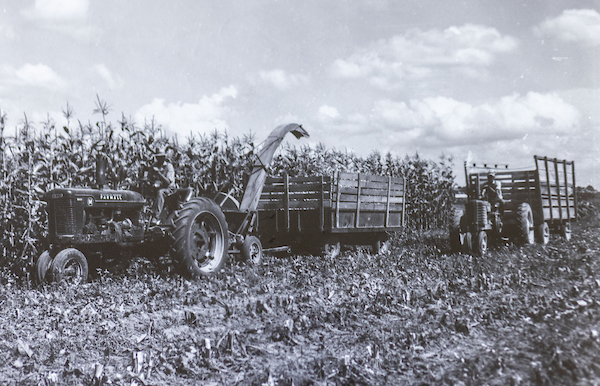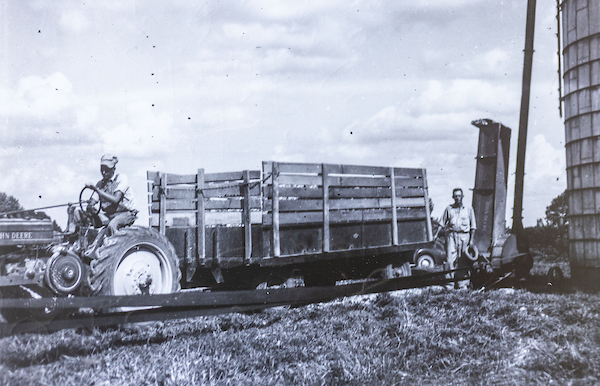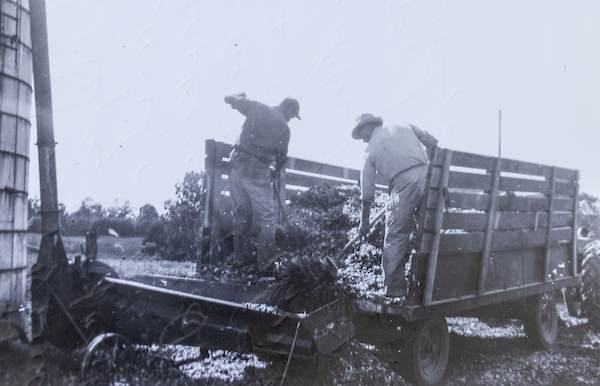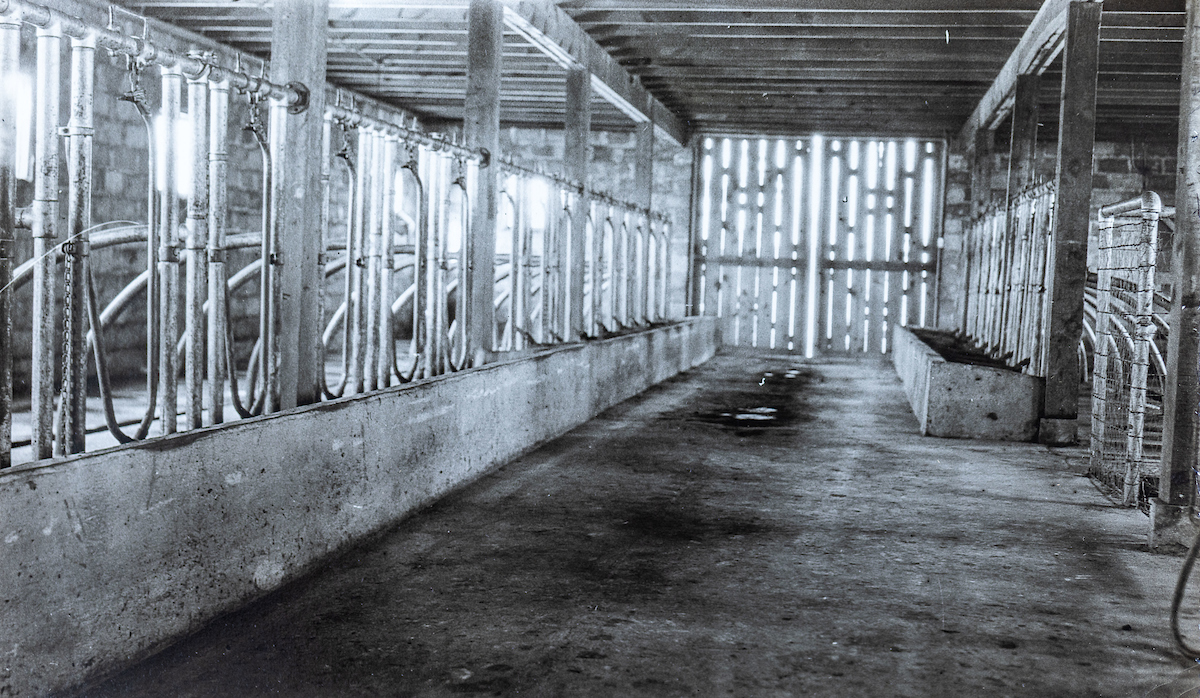4-History-1940s
The War Years (1940s)



Silage study and harvest, 1946.
The 1940s decade opened without much relief for the severely depressed economy. However, America’s entrance into the war in December 1941 would set the tone for research directly throughout the early part of the decade and indirectly throughout the second half.
Labor Issues, War Food and Castor Beans
Lowry’s comments in late 1942 included concerns about the war decimating the farm crew, and he wrote in 1943 that half of his workers had volunteered or been drafted into the war effort, leaving few workers available for hiring to fill the vacancies. Local teenagers were hired to fill in during the busy summer months.
By 1943, the acute labor shortage meant that only necessary maintenance projects at the farm were completed, and these were only undertaken if the required materials could be procured, which was sometimes problematic due to the diversion of building materials, such as paint, for use in the war effort.
Upon the government's request, the researchers expanded their castor beans research, which had begun in 1939. Castor beans could be pressed for their oil, which was used as a lubricant in aviation. It was feared that importations of castor beans might be cut off due to the war. These new “firehouse” experiments involved fertilizer tests, a planting rate test, a date-of-planting test, and a variety test.
Some tobacco research that year was suspended due to the preoccupation with food production for the war effort, as well as the labor shortage.
Educational Events Pause and Resume
The annual field day, begun in the 1920s, was cancelled in 1943, 1944, and 1945 due to the war.
A one-day meeting, called the “War Food Conference,” replaced the annual two-day short course in 1944, emphasizing greater food production and food preservation during wartime.
The war ended in 1945, and the educational events resumed in 1946. Many who attended were veterans. The two-day short course began to outgrow the available seating capacity, so additional events were held at the Caldwell County Courthouse. The short course was eventually discontinued due to lack of space in 1948. Higher attendance for the short course led to offering two days for the annual summer field day.
Post War Research
By the end of the decade, the dairy operation began experimenting with artificial insemination to improve the quality of replacement calves. The dairy, which had previously produced Grade C milk (for butter, cheese, and dry milk), began producing Grade A milk following the renovation of its milking facilities.
Agronomists were investigating the effects of minor elements on tobacco, as well as conducting research programs that had been initiated previously, including studies on the effects of various rates of nitrogen, phosphorus, and potassium.

Station Milestones
1940
- Tobacco and field crop research continues, focusing on disease, nutrient management, and variety selection.
1942
- The tall fescue variety grown and tested on the station was released as “Kentucky 31” by UK.
1943
- Topdressing ammonium nitrate on wheat research project begins.
- The farm woodlot demonstration started.
- Sheep Shearing School conducted.
1944
- Golden Delicious trees were planted on several different Malling, semi-dwarfing rootstocks.
1945
- “Kentucky 31” tall fescue is included in the Kentucky seed certification program and is adopted by farmers across Kentucky. * AGR-108
1947
- Fertility tests (N, P, K) on burley tobacco started.
- Black walnut variety test started.
1948
- Construction of a machine shed, shop, and storage building.
- Experiment on minor elements for burley tobacco began.
1949
- Artificial insemination of part of dairy herd begun.
- All entries in corn variety tests are hybrids.
